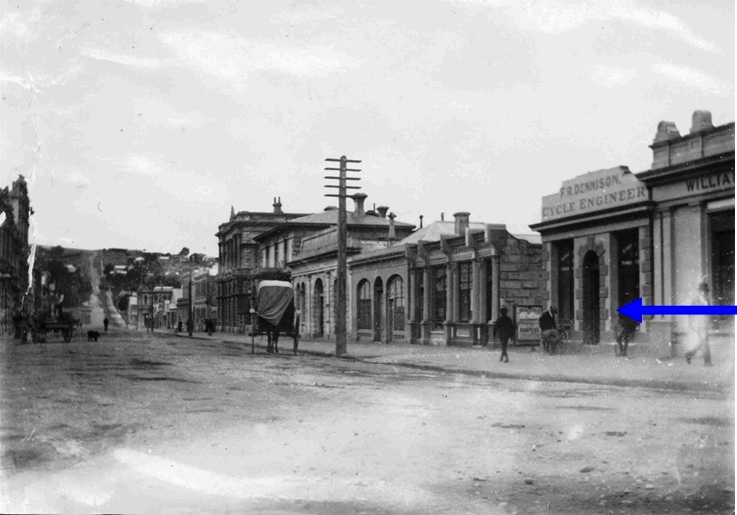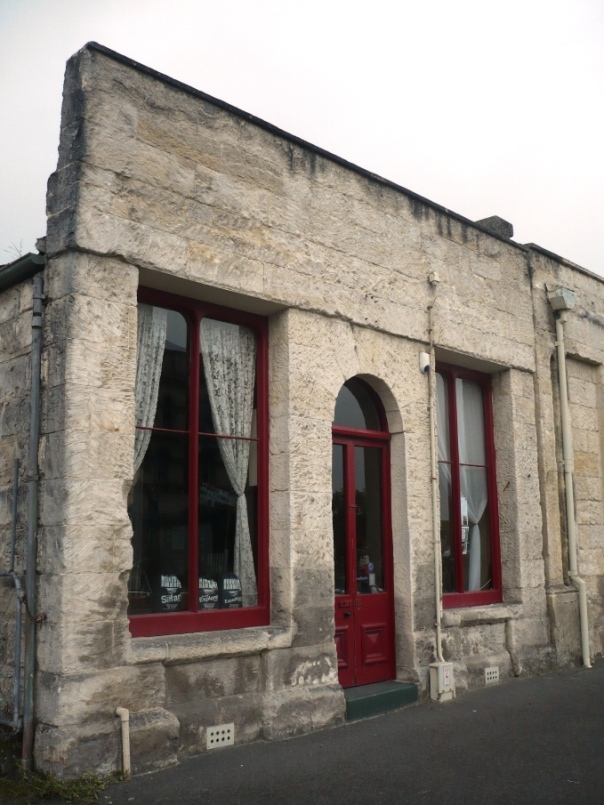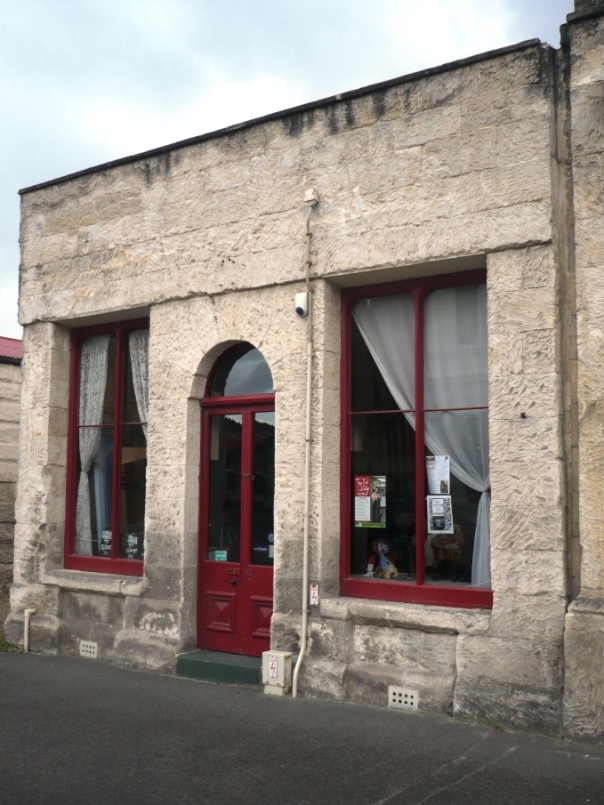Nestled in a cluster of small limestone buildings in the early business district of Oamaru, this diminutive building was probably built for businessman Samuel Shrimski before 1873. Grain and wool production on the pastoral estates boosted the development of a port town. The early 1870s saw the town transformed from an ‘insignificant collection of stone and wooden buildings’ along the west side of Tyne Street to an ebullient show of Victorian architecture. The rating information for 1867 indicates that Frank Pinkerton had a printing office on the land on which the current building stands. Frank Pinkerton was the founder of the newspaper first known as Oamaru Times and Waitaki Reporter. A photograph from 1870 indicates that a building of similar form was on this section by that time. Shrimski and Moss purchased the section in 1870. Prussian-born Samuel Shrimski (1830-1902), lived in London and Melbourne, Australia, before settling in Oamaru in 1861. He was four times elected Member of the House of Representatives for Oamaru, and in 1885 was appointed a member of the Legislative Council. He was also mayor of Oamaru among other civic roles. London-born Joseph Moss (1839- 1905) ran away to sea as a young lad and by the time he was fifteen had made it to the goldfields in Victoria, Australia. In 1861 he followed gold to Gabriel’s Gully before settling in Oamaru in 1862, where he co-founded the drapery company with Shrimski. Shrimski advertises his ‘New Sale Rooms’ adjoining Bee Brother’s Store in June 1873. Shrimski’s ‘office and store’ were advertised to let in May 1876. One of the more colourful occupiers (and there were many leasees) was Frank Ridley Dennison (1876-1960), a mechanical engineer who designed and built New Zealand’s first indigenous motor car in 1900. He leased this site in the mid to late 1890s, advertising as a cycle engineer. A photograph of the building during Dennison’s tenancy shows the street front of the premises. There is a central door with an arched opening with contrasting quoins which are repeated on the building corners. Shrimski and Moss held title to this section until 1903 (sold after Shrimski’s death in 1902). Shrimski’s former Sale Rooms are significant as one of the early business premises in what was the first business district in Oamaru. Its scale reminds visitors of the beginnings of the town, before the development of the grand White Stone architecture. Shrimski and Moss were significant figures in the development of the fledgling settlement in the 1860s and early 1870s. In 2012 this building continues to house retail premises, carrying on its nineteenth century legacy. It is one of what McCarthy describes as Oamaru’s ‘valuable artefacts which teach us a great deal about the culture which produced them’ - the confidence in economic progress and the nostalgia for the Old World, creating a physically familiar place in their new home.



Location
List Entry Information
Overview
Detailed List Entry
Status
Listed
List Entry Status
Historic Place Category 2
Access
Private/No Public Access
List Number
4692
Date Entered
9th September 1986
Date of Effect
9th September 1986
City/District Council
Waitaki District
Region
Otago Region
Extent of List Entry
The extent includes part of Lot 2 DP 6417 (RT OT330/113), Otago Land District and the building known as Shrimski's Sale Rooms (Former) and its fixtures and fittings thereon.
Legal description
Lot 2 DP 6417 (RT OT330/113), Otago Land District
Stay up to date with Heritage this month
